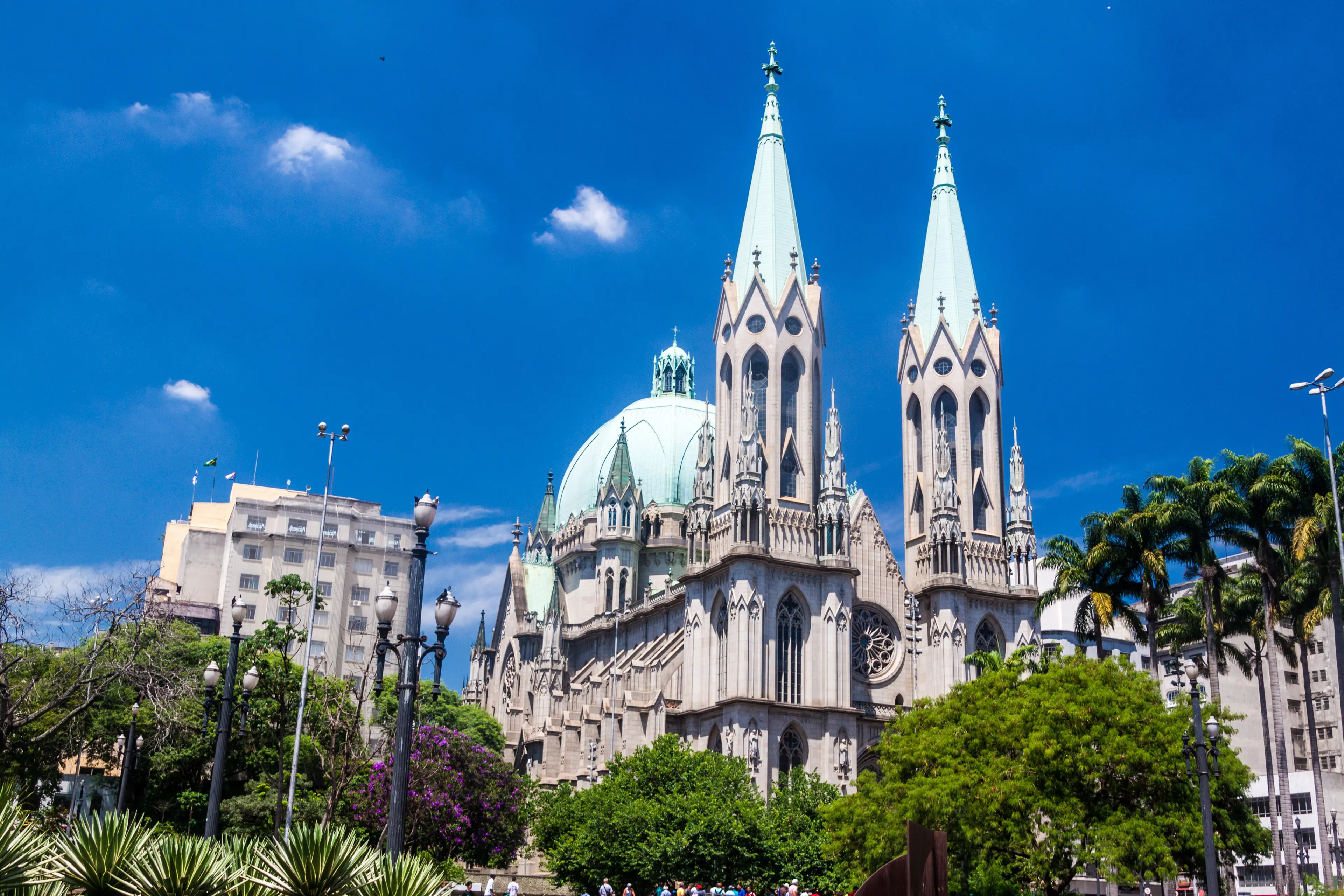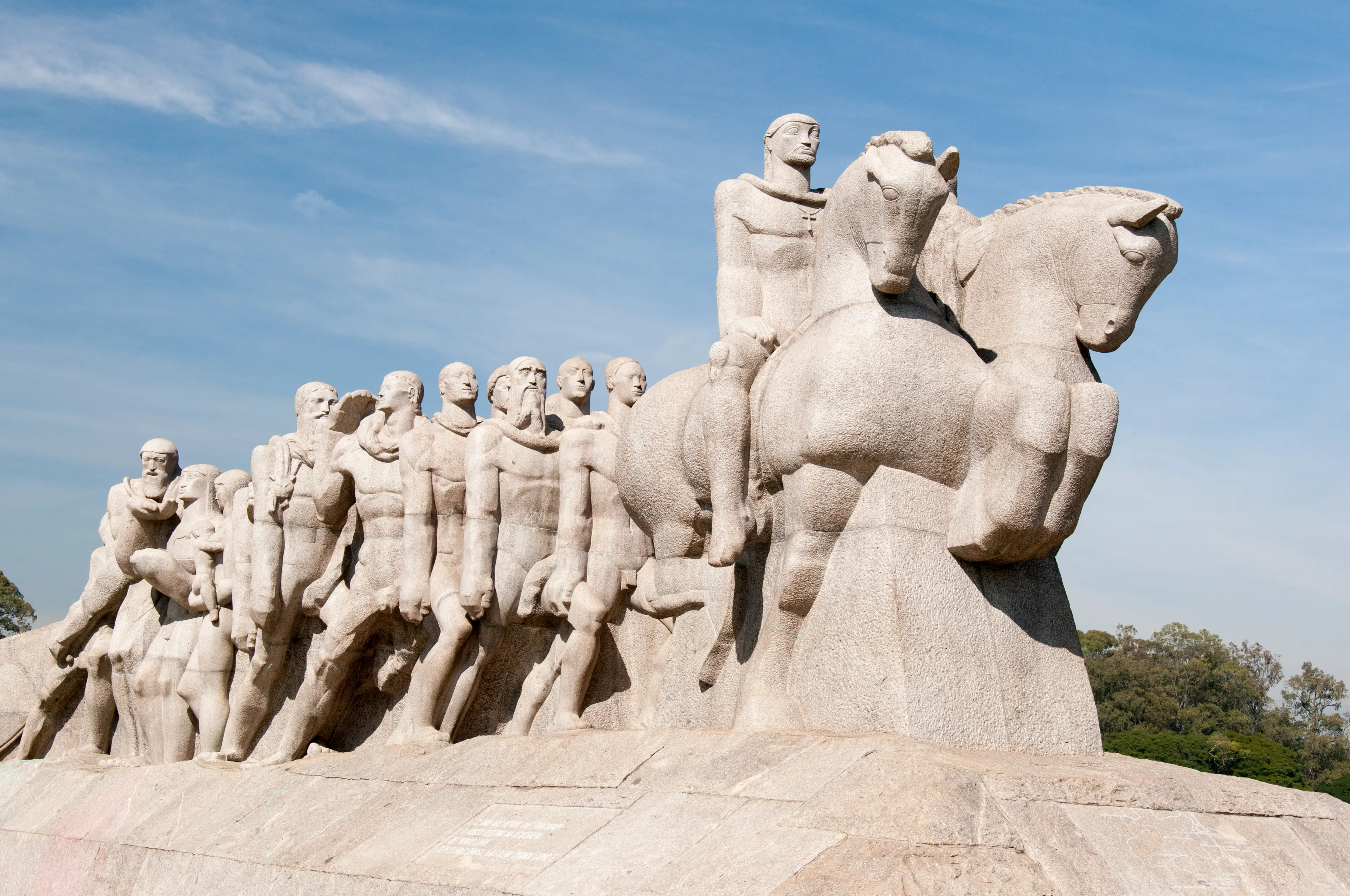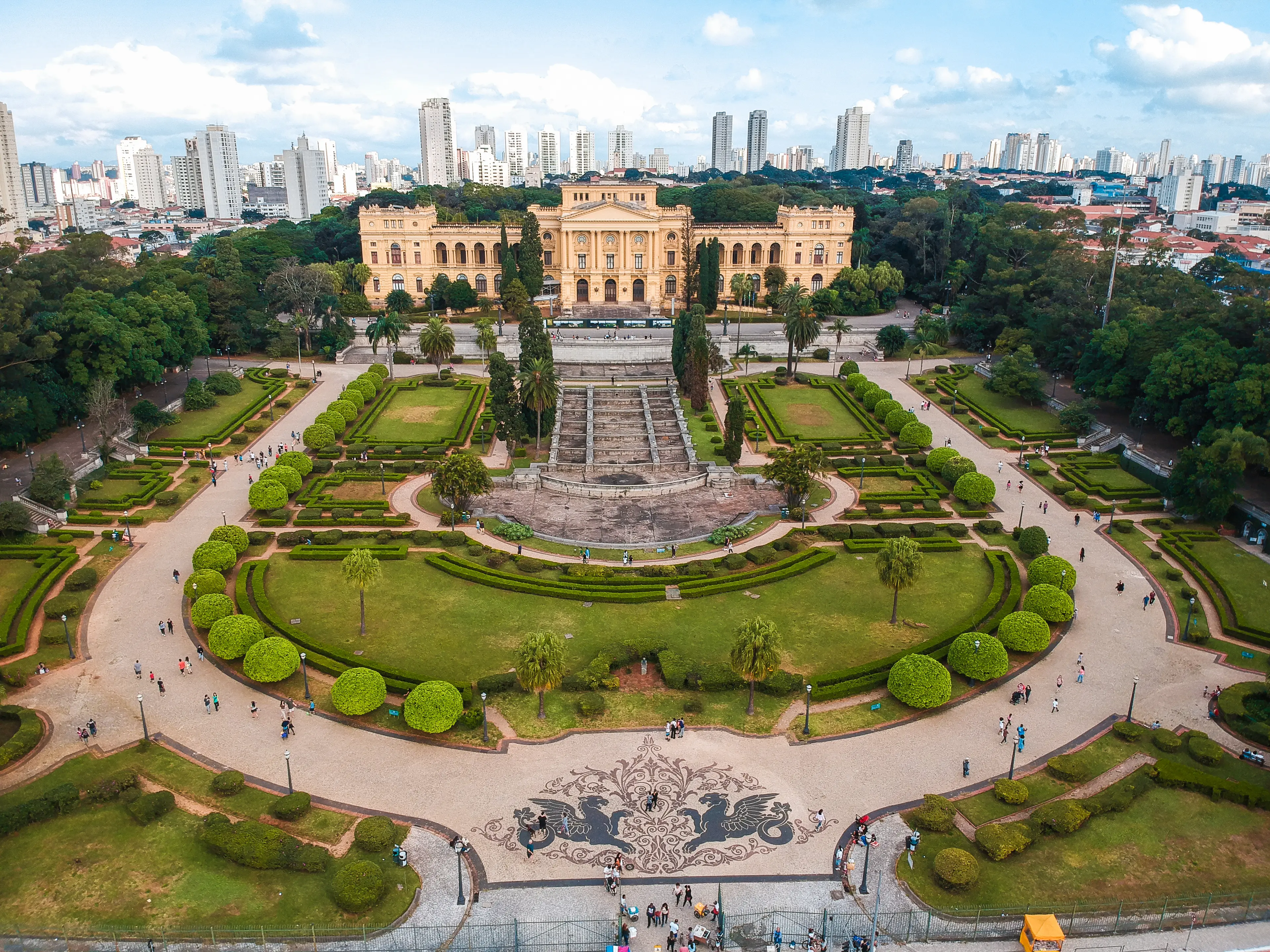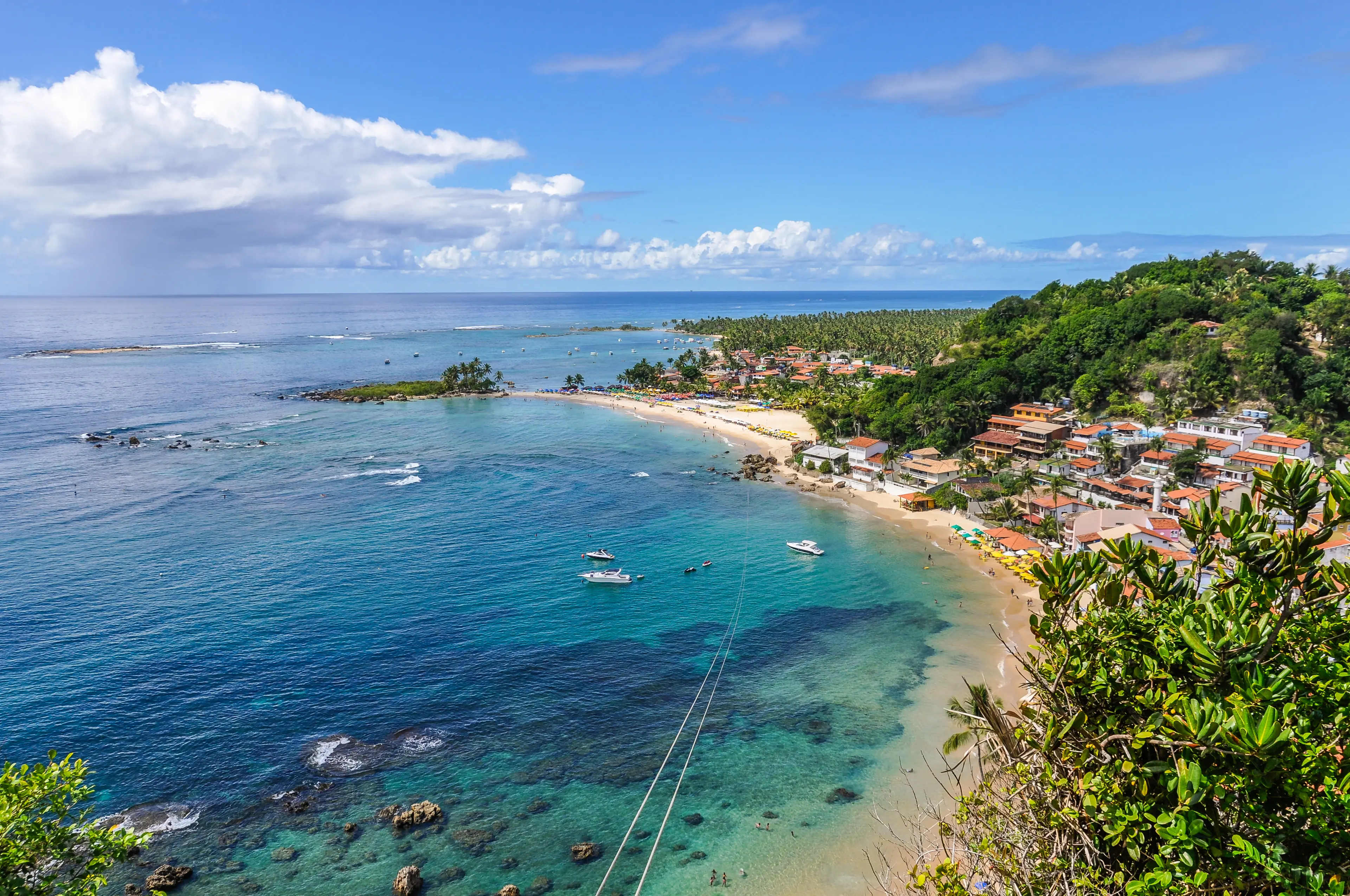3-Day Local Experience in Sao Paulo: Food, Wine, Nightlife and Sights
Sao Paulo, Brazil
3 days





About Sao Paulo, Brazil
Sao Paulo, Brazil's vibrant financial hub, is a captivating blend of cultures and styles. As a city that never sleeps, it offers a diverse range of experiences from its world-class gastronomy, rich architectural heritage, to its pulsating nightlife. Explore the iconic Paulista Avenue, home to numerous cultural institutions including the Sao Paulo Museum of Art. Visit Ibirapuera Park, a green oasis in the heart of the city, or immerse yourself in the local culture at the Municipal Market. Sao Paulo's music scene is a melting pot of genres, and its shopping ranges from luxurious designer boutiques to unique local markets. With its mix of modern skyscrapers and historical landmarks, Sao Paulo is a city of contrasts waiting to be discovered.
3-Day Itinerary
Day 2
Discovering Liberdade and Itaim Bibi
Morning
Explore the Liberdade district, known as the Japanese neighborhood of Sao Paulo. Visit the local markets and try some traditional Japanese-Brazilian street food.
Lunch
Have lunch in a traditional Japanese restaurant in the Liberdade district. Try the 'Sushi' or 'Ramen', both are popular among locals.
Afternoon
Visit the Sao Paulo Cathedral, a neo-gothic masterpiece and one of the city's most iconic landmarks. Take a stroll in the Patio do Colegio, the birthplace of the city.
Dinner
Dine in a restaurant in the Itaim Bibi neighborhood, known for its diverse culinary scene. Try the 'Picanha', a popular Brazilian beef cut.
Evening
Enjoy a night of live music in one of the jazz clubs in the Itaim Bibi neighborhood. It's a great way to experience the city's vibrant music scene.
Day 3
Relaxing in Ibirapuera Park and Shopping in Vila Olimpia
Morning
Visit the Ibirapuera Park, Sao Paulo's largest green space. Enjoy a leisurely walk, rent a bike, or visit one of the several museums within the park.
Lunch
Have a picnic in the Ibirapuera Park. Enjoy the local delicacies like 'Coxinha', a chicken croquette, and 'Pao de Queijo', a cheese bread.
Afternoon
Explore the 'Vila Olimpia', a neighborhood known for its shopping malls and entertainment venues. Visit the JK Iguatemi, one of the city's most luxurious shopping centers.
Dinner
Have dinner in a restaurant in the 'Vila Olimpia' neighborhood. Try the 'Moqueca', a Brazilian fish stew.
Evening
End your trip with a visit to a rooftop bar in the 'Vila Olimpia' neighborhood. Enjoy the panoramic views of the city while sipping on a 'Caipirinha', Brazil's national cocktail.
Attractions in Itinerary (9)

1Paulista Avenue
One of the most important avenues in Sao Paulo, it is the center of economic and cultural activities, housing an extensive shopping area, cultural institutions, and a vibrant nightlife.

2Sao Paulo Museum of Art
Known as MASP, it's an art museum located on Paulista Avenue. It is well known for its headquarters, a 1968 concrete and glass structure designed by Lina Bo Bardi, whose main body is supported by two lateral beams over a 74 meters freestanding space.

3Vila Madalena
Known for its bohemian vibe, Vila Madalena is a vibrant neighborhood with a rich cultural scene, featuring a variety of bars, restaurants, art studios, and boutiques.

4Liberdade
Known as the Japanese district of Sao Paulo, Liberdade is filled with shops, restaurants, and markets that reflect the culture of the largest Japanese community outside of Japan.

5Sao Paulo Cathedral
One of the five largest Neo-Gothic structures in the world, the cathedral is the seat of the Archdiocese of Sao Paulo.

6Patio do Colegio
The site where the city of Sao Paulo was founded in 1554, it now houses a museum dedicated to the city's history.

7Itaim Bibi
Itaim Bibi is a posh neighborhood known for its high-end restaurants and bars, bustling nightlife, and upscale shopping centers.

8Ibirapuera Park
One of the largest city parks in Latin America, Ibirapuera Park is a hub for outdoor activities, cultural events, and houses several important museums.

9JK Iguatemi
JK Iguatemi is a luxurious shopping mall offering a wide range of high-end brands, a state-of-the-art cinema, and a variety of dining options.
Local Food and Drinks (12)

Feijoada
A traditional Brazilian stew made of black beans, pork, and beef. It's a hearty dish often served with rice, collard greens, and farofa (toasted cassava flour). It's very popular in Sao Paulo and a must-try for any food lover.

Pastel
A popular street food in Sao Paulo, Pastel is a deep-fried pastry filled with various ingredients such as cheese, meat, or palm hearts. It's often enjoyed at local markets or as a quick snack.

Virado à Paulista
A typical dish from Sao Paulo, Virado à Paulista consists of tutu de feijao (bean paste), rice, kale, pork chops, and a fried egg. It's a hearty meal that showcases the city's culinary diversity.

Coxinha
A popular snack in Sao Paulo, Coxinha is a chicken croquette shaped like a chicken drumstick. It's crispy on the outside, creamy on the inside, and perfect for a quick bite.

Pão de queijo
A typical Brazilian breakfast item, Pão de queijo is a small, baked cheese bread. It's soft, chewy, and full of flavor. It's a staple in Sao Paulo and a must-try for any visitor.

Caipirinha
Brazil's national cocktail made with cachaça (sugar cane hard liquor), sugar, and lime. It's refreshing and strong, and a popular drink in Sao Paulo's bars and restaurants.

Brigadeiro
A beloved Brazilian dessert, Brigadeiro is a small chocolate truffle made with condensed milk, butter, and chocolate. It's a sweet treat often served at parties and celebrations in Sao Paulo.
Moqueca de peixe
A traditional Brazilian fish stew made with tomatoes, onions, garlic, and coriander. It's a flavorful dish often enjoyed in Sao Paulo's coastal areas.

Acarajé
A popular street food in Sao Paulo, Acarajé is a deep-fried ball of black-eyed pea dough filled with shrimp, vatapá (a paste made from bread, shrimp, coconut milk, and palm oil), and vegetables. It's a flavorful and satisfying snack.

Guaraná
A popular Brazilian soft drink made from the fruit of the guaraná plant. It's sweet, refreshing, and a common beverage in Sao Paulo.

Empada
A small, round pie filled with various ingredients such as chicken, shrimp, or palm hearts. It's a popular snack in Sao Paulo and can be found in many bakeries and snack bars.

Bauru
A traditional Brazilian sandwich made with roast beef, mozzarella cheese, tomato, and pickles on a French bun. It's a popular lunch option in Sao Paulo and a must-try for sandwich lovers.
Best time to visit
The best time to visit Sao Paulo, Brazil as a tourist is during the months of March to May and October to November. These periods represent the fall and spring seasons in Brazil, respectively. The weather during these times is typically warm and pleasant, with fewer rain showers, making it ideal for sightseeing and outdoor activities. Additionally, these periods are considered shoulder seasons, meaning they're less crowded with tourists, and you might find better deals on flights and accommodations.
National holidays
Here you can find the national calendar of all public holidays for the year. These dates are subject to change as official changes are announced, so check back regularly for updates.
| Date | Day | Holiday Name |
|---|---|---|
January 1 | Mon | New Year's Day |
February 12 | Mon | Carnival Monday |
February 13 | Tue | Carnival Tuesday |
February 14 | Wed | Carnival end (until 2pm) |
March 29 | Fri | Good Friday |
April 21 | Sun | Tiradentes Day |
May 1 | Wed | Labor Day / May Day |
May 30 | Thu | Corpus Christi |
September 7 | Sat | Independence Day |
October 12 | Sat | Our Lady of Aparecida / Children's Day |
October 28 | Mon | Public Service Holiday |
November 2 | Sat | All Souls' Day |
November 15 | Fri | Republic Proclamation Day |
December 24 | Tue | Christmas Eve (from 2pm) |
December 25 | Wed | Christmas Day |
December 31 | Tue | New Year's Eve (from 2pm) |
How to get around
Taxi
Taxis are a common way to get around in Sao Paulo. They are available 24/7 and can be hailed from the street, booked via phone, or through taxi apps. They are metered and the fare depends on the distance and time of travel.
Ridesharing
Ridesharing services such as Uber, 99, and Cabify are widely used in Sao Paulo. They offer a convenient and often cheaper alternative to taxis. You can book a ride using their respective apps, which also provide an estimated fare before you confirm the booking.
Public Bus
Sao Paulo has an extensive bus network that covers the entire city. Buses run frequently and are a cost-effective way to travel. However, they can be crowded during peak hours and the traffic can be heavy. You can pay the fare using a Bilhete Único card or cash.
Metro
The Sao Paulo Metro is a fast and efficient way to travel around the city. It has five lines that connect major areas of the city. The trains run from 4:40 AM to midnight on weekdays and Saturdays, and from 5 AM to midnight on Sundays and holidays.
Bicycle
Sao Paulo has a growing network of bike lanes and bike-sharing services are available. It's a green and healthy way to get around, especially for short distances. However, be aware that the city's hilly terrain and heavy traffic may pose challenges.
Car Rental
Renting a car can be a good option if you're comfortable driving in heavy traffic and can navigate around the city. Keep in mind that Sao Paulo has strict driving restrictions based on license plate numbers to control traffic congestion.
Walk
Walking can be a pleasant way to explore the city, especially in pedestrian-friendly areas like the historic downtown and the Paulista Avenue. However, Sao Paulo is a large city, so walking may not be practical for long distances.
Helicopter
Sao Paulo has the world's largest helicopter fleet for private use. It's a popular mode of transport among the city's wealthy residents to avoid traffic. There are several helipads scattered throughout the city, including on top of many high-rise buildings.
Important information
CurrencyR$ BRL
Time zoneFederal District
Driving sideRight
Emergency phoneAmbulance: 192 or 193 ; Fire: 193; Police: 190
Drinking waterOpt for bottled water
Power sockets
Voltage220 V
Things to know about Sao Paulo, Brazil as a first time visitor
1
Sao Paulo is the largest city in Brazil and one of the largest in the world.
2
Portuguese is the official language, but English is widely spoken in tourist areas.
3
The currency used is the Brazilian Real (BRL). Credit cards are widely accepted, but it's good to have some cash on hand.
4
Sao Paulo has a tropical monsoon climate with a wet season from October to March and a dry season from April to September.
5
The average temperature ranges from 55°F to 85°F (13°C to 29°C).
6
Tipping is not mandatory in Brazil, but it is customary to leave a 10% tip for good service in restaurants.
7
Public transportation is extensive and includes buses, trains, and a metro system. Taxis and ride-sharing services like Uber are also available.
8
Sao Paulo is generally safe for tourists, but like any large city, it's important to stay vigilant and aware of your surroundings.
9
The city is known for its diverse food scene. Be sure to try local dishes like feijoada, a black bean stew with pork, and pastel, a type of fried pastry.
10
Sao Paulo operates on Brasília time, which is 3 hours behind Coordinated Universal Time (UTC-3).
11
The city has a vibrant nightlife with a wide range of bars, clubs, and live music venues.
12
Sao Paulo is a cosmopolitan city with a diverse population. Respect for all cultures is important.
13
The electrical current in Brazil is 110/220 volts. The type of plug used is type N, which has two pins and a grounding pin.
14
Tap water is not generally safe to drink. It's recommended to drink bottled water.
15
Sao Paulo has a strong arts scene with numerous museums, galleries, and theaters.
16
The city is known for its traffic. Plan extra time to get to your destinations, especially during rush hour.
17
Sao Paulo has a high-quality healthcare system. Travel insurance is recommended for any unexpected medical expenses.
18
The city is a major business hub, so dress codes can be more formal than in other parts of Brazil.
19
Sao Paulo hosts numerous festivals and events throughout the year, including the Sao Paulo Fashion Week and the Sao Paulo Art Biennial.
20
The city is a shopping paradise with a range of options from high-end designer stores to local markets.
Basic Portuguese to know as a first time visitor
English phrase | Native phrase | Pronunciation | When to use it |
|---|---|---|---|
Hello | Olá | O-la | Greeting someone |
Goodbye | Tchau | Chow | Leaving or saying goodbye to someone |
Please | Por favor | Por fa-vor | When asking for something |
Thank you | Obrigado | O-bri-ga-do | After receiving something or someone's help |
Yes | Sim | Seem | Agreeing with someone or something |
No | Não | Nown | Disagreeing with someone or something |
Excuse me | Com licença | Kom li-sen-sa | Getting someone's attention or apologizing |
I'm sorry | Desculpe | Desh-kul-pe | Apologizing |
Do you speak English? | Você fala inglês? | Vo-se fa-la in-glesh | Asking if someone speaks English |
I don't understand | Eu não entendo | Ew nown en-ten-do | When you don't understand what's being said |
Where is the bathroom? | Onde é o banheiro? | On-deh eh o ba-neh-ro | Asking for the location of the restroom |
How much does this cost? | Quanto custa isso? | Kwan-to cus-ta is-so | Asking the price of something |
I would like to order | Eu gostaria de pedir | Ew gos-ta-ria de pe-dir | Ordering food or drink |
Help | Ajuda | A-ju-da | In case of emergency or needing assistance |
Can I have the bill, please? | Pode me trazer a conta, por favor? | Po-de me tra-zer a con-ta, por fa-vor | Asking for the bill at a restaurant |
Where is...? | Onde fica...? | On-de fi-ca | Asking for directions |
Water | Água | A-gwa | Asking for water |
Beer | Cerveja | Ser-ve-ja | Ordering a beer |
Wine | Vinho | Vin-yo | Ordering wine |
Cheers | Saúde | Sa-u-de | Toasting someone |
Packing List
Clothing
Lightweight clothing
Underwear
Socks
Swimwear
Comfortable walking shoes
Sandals
Light jacket or sweater
Rain jacket or umbrella
Sunglasses
Hat for sun protection
Toiletries
Travel-sized shampoo and conditioner
Body wash or soap
Toothbrush and toothpaste
Deodorant
Razor and shaving cream
Makeup and makeup remover
Sunscreen
Insect repellent
First aid kit
Prescription medications
Hand sanitizer
Travel documents and essentials
Passport
Driver's license or ID card
Credit and debit cards
Cash in local currency
Travel insurance documents
Hotel and transportation reservation confirmations
Emergency contacts and addresses
Electronics and gadgets
Smartphone
Charger for smartphone
Universal power adapter
Headphones
Camera
Charger for camera
Portable power bank
Miscellaneous items
Travel guidebook for Sao Paulo
Map of Sao Paulo
Snacks
Reusable water bottle
Travel pillow and blanket
Earplugs and eye mask
Books or e-books for entertainment
Travel-sized laundry detergent
Plastic bags for dirty clothes
Weather Conditions
Sao Paulo, Brazil, is a city that experiences a tropical monsoon climate, meaning it has a wet season and a dry season. The city is known for its unpredictable weather, so it's always a good idea to be prepared for sudden changes. The wet season typically runs from October to March, with January being the wettest month. During this time, you can expect heavy rainfall and thunderstorms, particularly in the afternoons and evenings. The average temperature during these months ranges from 68°F to 82°F (20°C to 28°C). If you're planning to visit during this period, it's advisable to pack a raincoat or umbrella. The dry season, from April to September, is generally cooler and less humid. The average temperature during this period ranges from 55°F to 75°F (13°C to 24°C). Nights can be particularly cool, so it's recommended to bring some warm clothing. Regardless of the season, Sao Paulo can be quite humid, so lightweight, breathable clothing is recommended. Also, don't forget to pack sun protection, such as sunscreen, hats, and sunglasses, as the sun can be quite strong, especially during the dry season. Finally, keep in mind that Sao Paulo is a large city with varying microclimates. The weather can differ significantly between different parts of the city, so it's always a good idea to check the local forecast before heading out for the day.
| Month | Hi / Lo (°C) | Weather Overview |
|---|---|---|
January | 28° / 19° | January is the warmest month in Sao Paulo, with temperatures ranging from 19°C to 28°C. It's also the rainiest month, so pack an umbrella. |
February | 28° / 19° | February is still quite warm and rainy, with temperatures similar to January. It's a good time to visit museums and indoor attractions. |
March | 27° / 18° | March sees a slight decrease in temperature and rainfall. It's a good time to explore the city's parks and outdoor attractions. |
April | 25° / 16° | April is the beginning of the dry season in Sao Paulo, with temperatures ranging from 16°C to 25°C. It's a great time for outdoor activities. |
May | 23° / 14° | May is a cooler month, with temperatures dropping to 14°C at night. It's a good time to visit Sao Paulo's cafes and restaurants. |
June | 22° / 12° | June is the start of winter in Sao Paulo, with temperatures ranging from 12°C to 22°C. It's a good time to visit the city's museums and cultural sites. |
July | 22° / 12° | July is the coldest month in Sao Paulo, but temperatures are still mild by most standards. It's a great time to explore the city's indoor attractions. |
August | 23° / 13° | August sees a slight increase in temperature, with highs of 23°C. It's a good time to visit the city's parks and outdoor attractions. |
September | 24° / 14° | September marks the beginning of spring in Sao Paulo, with temperatures ranging from 14°C to 24°C. It's a great time for outdoor activities. |
October | 25° / 15° | October is a warmer month, with temperatures ranging from 15°C to 25°C. It's a good time to explore the city's parks and outdoor attractions. |
November | 26° / 17° | November sees a further increase in temperature, with highs of 26°C. It's also the start of the rainy season, so pack an umbrella. |
December | 27° / 18° | December is a warm and rainy month in Sao Paulo, with temperatures ranging from 18°C to 27°C. It's a good time to visit museums and indoor attractions. |
Did you know?
Places near by Sao Paulo, Brazil

Santos Beach
Famous for its beautiful beaches and the largest seaport in Latin America.

Paranapiacaba
Historic railway village with a unique charm.

Guarujá
Known as the 'Pearl of the Atlantic', famous for its beautiful beaches.

Embu das Artes
Artistic town known for its weekly craft fair.

Campinas
City known for its historical and cultural attractions.

São José dos Campos
City known for its technological park and aerospace museum.

Sorocaba
City with a mix of history, nature, and modernity.

Parque Estadual Serra do Mar
A large protected area of the Atlantic Forest.

Ubatuba
City known for its beautiful beaches and biodiversity.

Paraty
Historic city known for its colonial architecture and beautiful beaches.


